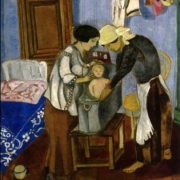Presentation, The Ordering Function of Thought in Folktales
Each of the articles in the volume relates to unique aspects regarding the affinity existing between fairy tales, or tales which share common characteristics with folktales, and the therapeutic process – either individual therapy, or a group workshop. Several articles in this issue deal with the ways in which fairy tales function in the therapeutic process.
The connecting thread of the articles is the use of the fairy tale as a “mediating object” in psychotherapy, as well as in educational situations: fairy tales convey profound topics, both in therapeutic and educational contexts and provide indirect access to these topics. Lafforgue, citing Kaës, defines them as a “prêt-porter” for thinking, emphasizing their “ordering function”. Read more

